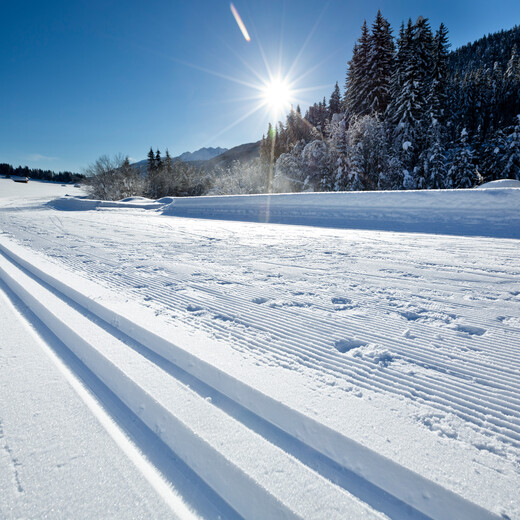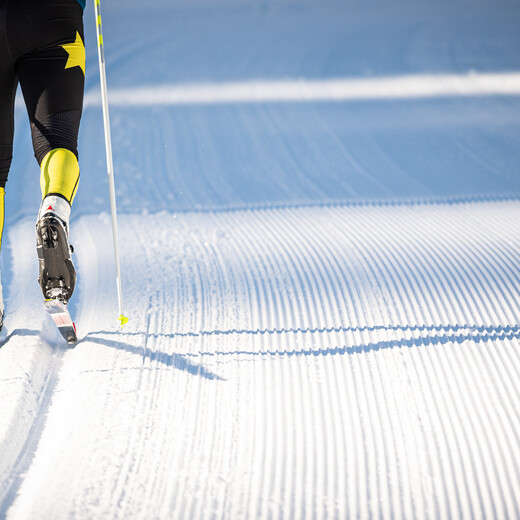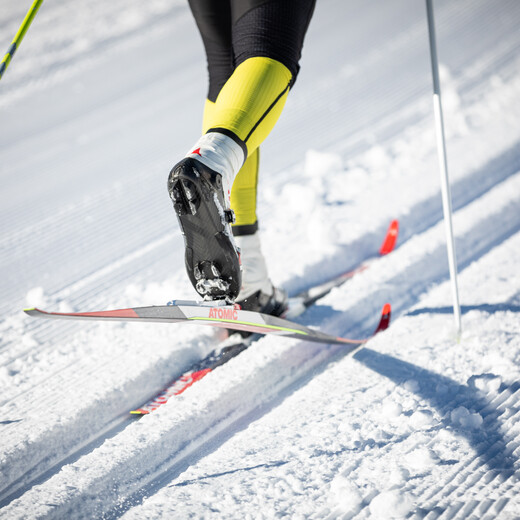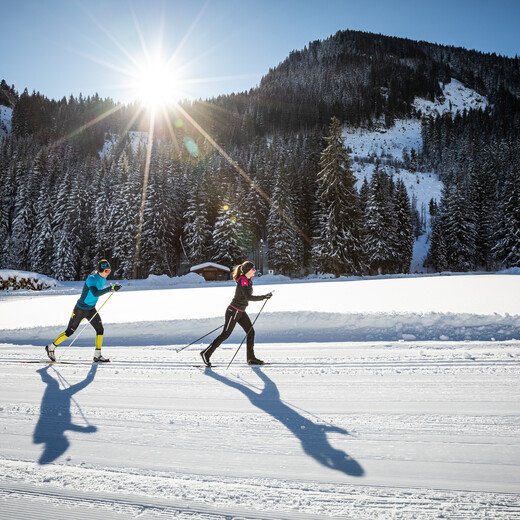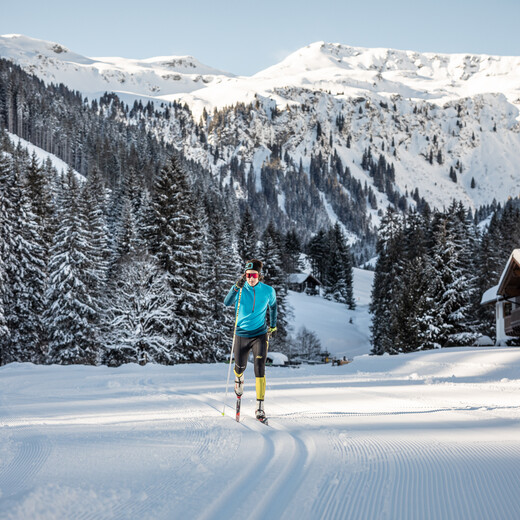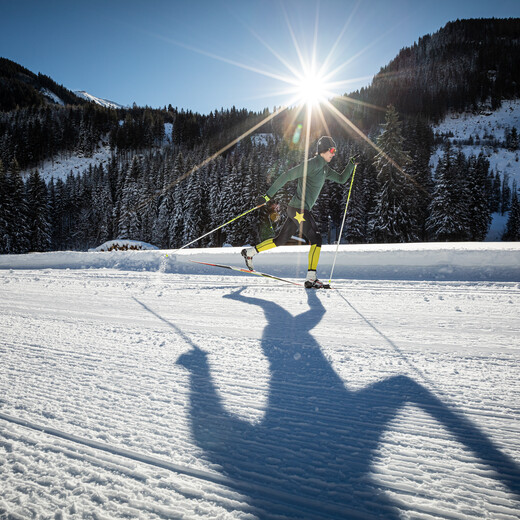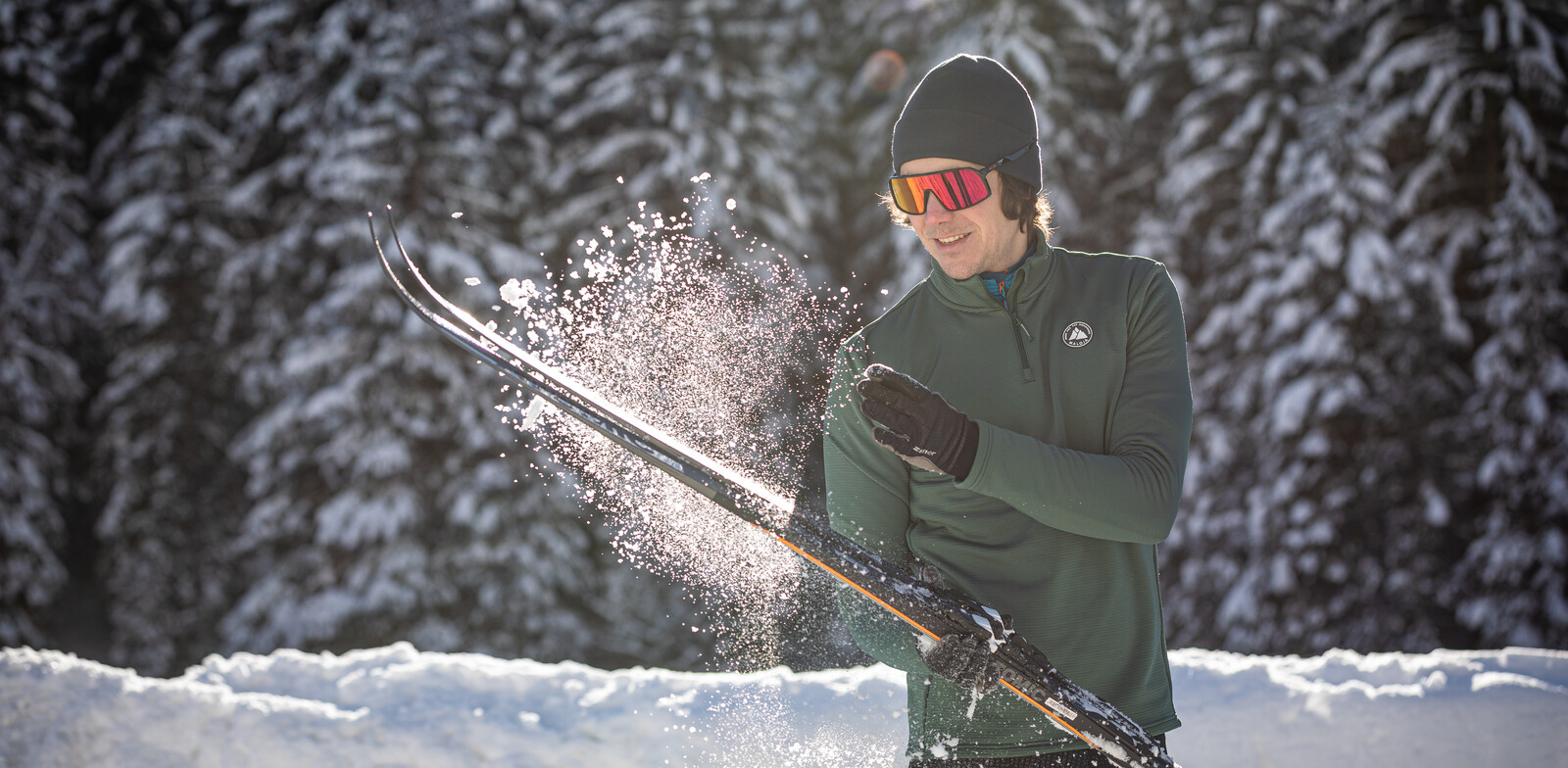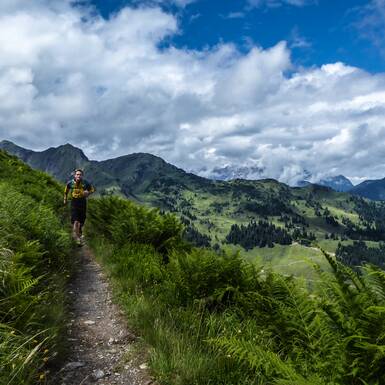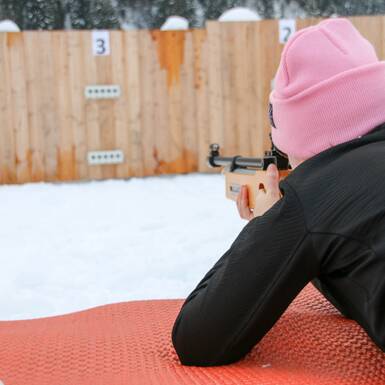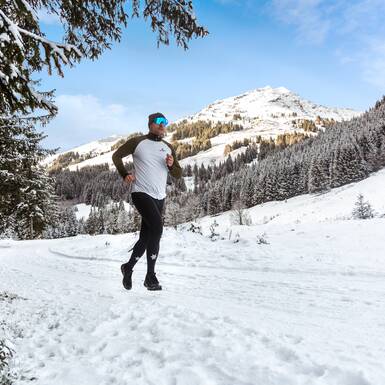- Outdoors
The world on two narrow planks
Gazing down at the narrow skis beneath your feet as they carve their way through the fine ridges of snow of the freshly groomed track. Every time you push off, there is something so sublime at this moment filled with endorphins and crisp winter fresh air as you power your way along the trail without the help of gravity, the landscape, with the mountain peaks drenched in sunlight simply whizz by.
As early as 2,500 BC, Scandinavian hunters used narrow pieces of wood to prevent them from sinking into deep snow, which according to the Swedish archaeological finds mentioned above makes cross-country skiing one of the oldest winter sports. In the meantime, this means of mobility was no longer needed for hunting. So, health-conscious sportsmen and women train without a rifle at the ready, apart from biathletes.
So, we come back to the here and now, and back to the winter sun of Saalbach. Cross-country skiing has always been considered a sport that promotes and challenges the cardiovascular system in all respects. Gliding on the snow is easy on the joints, strengthens the musculoskeletal system, improves balance and is a lot of fun, especially if you have already moved on from a novice’s status. Then things become sporty, whether in skating or diagonal style.
Technique & Style
Cross-country skiing distinguishes between two techniques, except for more recent techniques such as the double pole technique used in ski marathons. The conventional "classic" variant is also called the diagonal technique. Like Nordic walking, one moves straight ahead, and the skis glide in alternate strides in two grooved tracks, which are effectively a guide for the ski tips. This technique is the older of the two styles. It differs fundamentally from the skating technique, also called the "freestyle technique". Both skating styles also have one thing in common: a free heel. Under the motto "Free your Heel, Free your Life!" - a cheeky reference to the exclamation of many a telemark skier. The cross-country ski is only attached to the boot's toe, and the free heel aids mobility. Modern equipment takes care of the rest, and the bindings provide sufficient support for the raciest of descents in the Glemmtal.
The Punks are on the loose
The former free spirits of the 80s did not want to be limited by tracks and guides. Pauli Siitonen, the brightest star in these technique-transformers' firmament, unceremoniously released one of his legs from this constraint of the "snow groove" and pushed himself off the track in a skating step. The result was powerful, and the "Siitonen step" or "Finnstep" was born. When in 1981 and 1982 the first successes were achieved with this new technique, this style spread across the globe in no time and soon all cross-country skiing trails were prepared for both types of skiing.
The cross-country skiing punks status, far removed from norms and regulations, caused traditionalists' resentment. Hostile voices were raised by the guardians of technique from the depths of Scandinavian forests and fierce protests by race organisers. When at the 1985 Nordic World Ski Championships in Seefeld, Tyrol, the desperate attempt to stop this technique failed (even the steepest of hills could not stop the skating style in Seefeld). FIS regulations were finally adapted for the winter of 1985/1986, and two separate techniques were introduced. Disciplinary branches of cross-country skiing, such as biathlon and Nordic combined, soon followed.
Winter Fitness
Over the last few years, this very old sport has been enjoying a revival, driven by the idea of fitness and the yearning for fresh winter air. The fact that you do not necessarily need mountains for this sport favours its popularity even in areas far from the Alps and therefore practised by millions of people worldwide. Cross-country skiing exercises the whole body while at the same time burning an incredible number of calories. The Kaiserschmarrn tastes all the better afterwards! The thigh and gluteal muscles in particular work at full speed, while the core, i.e., the abdominal muscles, arm and shoulder muscles are trained with pole movement.
As with most winter sports, snow is the key factor. The snow guarantee in Saalbach is a plus for cross-country skiing in the valley. While elsewhere cross-country skiers are still searching for the white spots between the molehills, you can already do your first laps at the end of the valley in Saalbach. The geographical characteristics of the valley do not allow for extensive rounds of cross-country skiing. Still, the Saalbach cross-country skiing trails impress with their guaranteed snow, character and surrounding Alpine landscape. Starting just after the village of Hinterglemm, at the Saalbach Hinterglemm Sports Centre, the trail meanders through the picturesque end of the valley. A short loop located in the district of Lengau also caters for beginners and fitness enthusiasts. Winter hikers can walk to the Treetop Trail, covering more than 12 km there and back.
Alpine skiing is the undisputed king of sports in the Glemmtal, but there are also some special activities off the piste in the winter sunshine of Saalbach. You can find more activities under WINTER SUN ACTIVE.

